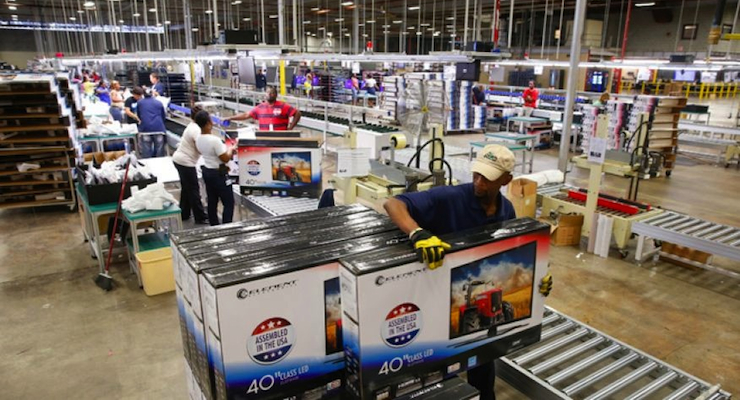

Surveys gauging growth or contraction in Midwest manufacturing. (REUTERS)
The Chicago Business Barometer, the Institute for Supply Management-Chicago’s gauge of Midwest manufacturing activity, fell to 48.7 in September from 54.4 the month prior. Economists polled by Reuter expected a decline only to 53 for the month, still above contraction.
The September reading is the lowest since May and the first contraction since June, but all regional manufacturing activity this month showed contraction. Readings above 50 point to expansion, while those below indicate contraction.
“While activity between Q2 and Q3 actually picked up, the scale of the downturn in September following the recent global financial fallout is concerning,” Chief Economist of MNI Indicators Philip Uglow said. “Disinflationary pressures intensified and output was down very sharply. We await the October data to better judge whether this was a knee jerk reaction and there is a bounceback, or whether it represents a more fundamental slowdown.“
The drop in the Barometer to below 50 was its fifth time in contraction territory this year and follows two months of moderate growth, and while growth in Q3 accelerated a little from Q2, the speed of the September descent is a source of concern. Three of the five components of the Chicago Business Barometer posted contraction, with only Employment and Supplier Deliveries remaining above the 50 neutral level.
The decline was fueled Production that clocked a sharp double-digit drop and placed it at the lowest since July 2009. New Orders also fell significantly and both key activity measures are running well below their historical averages. “Companies also appeared to be working below capacity with Order Backlogs remaining in contraction for the eighth consecutive month,” the report stated. “The sharp rise in stock growth seen in August was not repeated, with inventories falling back closer in line with the longrun average.”
The contraction displayed in the Chicago Business Barometer was mirrored by all other indexes of regional manufacturing activity in the U.S. during the month of September, as well as an unexpected decline in durable goods.
The Commerce Department reported on Thursday last week that new orders for long-lasting manufactured durable goods fell 2% in August. The report came after two closely-watched surveys of regional manufacturing activity indicated contraction last month. The Philadelphia Federal Reserve’s regional Manufacturing Business Outlook Survey for the mid-Atlantictankedto -6 in September from 8.3 the month prior. The Fed’s reading came in far below economists’ expectations for a drop to positive 6.
The Philadelphia Fed’s report marked the second major regional manufacturing survey released this week showing the sector contracting, as the Empire State Manufacturing Survey out last Wednesday showed regional manufacturing activity contracted for a second straight month in September, remaining well below zero at -14.7.






